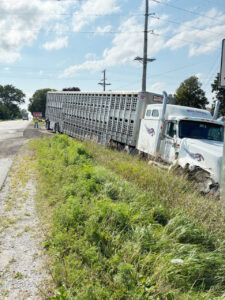Behind the scenes at the State Fair
Pollak judges crop entries for farmers, FFA
DES MOINES — Everyone sees the sweat and hard work exhibitors pour into their entries at the county and state fair, but not everyone knows what goes on behind the scenes in the life of an exhibition judge at the Iowa State Fair.
Linda Pollak happens to be a farm crops judge from Guthrie Center, where she and her husband, a retired farmer, live. Pollak is also retired from the Agriculture Research Service in Ames where her main focus was on breeding corn. She attended Ohio State for her bachelor’s degree and earned her master’s degree at the University of Nebraska.
“When I started my career, I was working on an international project with Latin American countries to evaluate native germ plasm for suitability in modern breeding programs,” Pollak said. “That then led to a project working with companies mostly in the U.S., trying to get the material into their breeding programs. Then I switched to a project working with farmers who were using more organic and sustainable methods to help them improve their breeding material.”
But when she was at home, Pollak was hands on with the cattle farm, helping out her husband.
“I chased a lot of cows,” she said.
Pollak first started judging exhibits at the Iowa State Fair years ago when a friend was judging and knew of an opening for a volunteer judge.
“I did it a couple of years, then took a little break, then went back, and I’ve been doing it ever since,” she said. “It gives us a chance to go to the fair for me to volunteer judge. Then we go back again for us — just to see everything. We love it.”
As a farm crops judge, Pollak said people submit entries for all kinds of crops, including digging up corn plants and bringing them along with last year’s for comparison, she’s seen it all. She judges entries for a long list of characteristics, including uniformity. Characteristics for judging change based upon the category, such as popcorn or ornamental corn.
“When I started out volunteer judging at the fair, I judged a wide variety of crops, like soybeans, corn and wheat, but now I’m pretty much focused on corn and working with the FFA entrants in particular,” she said. “The FFA kids love it and appreciate us taking the time to judge. I also think they learn a lot from the process.”
The crops entries are submitted by both Iowa farmers across the state as well as FFA students, who are in their own separate category.
“I really enjoy judging the FFA category, as you can really see the progress they’ve made over the years,” Pollak said.
Pollak said she dedicates the first day of the fair to judging, starting her day bright and early, and wraps up her work around lunchtime or soon thereafter. The number of entries each year varies, and historically has ranged from three to 30.
“Once I’m done judging, we walk around and often stay for the fireworks, then we’ll go back on Monday and spend the whole day enjoying the fair,” Pollak said.
Having grown up in Ohio and attending college there and in Nebraska, Pollak said nothing compares to the Iowa State Fair.
“In Ohio, our county fair was more important than our state fair. I was involved in 4-H, and in high school, we’d go as a group to the state fair for fun. We also visited the Nebraska State Fair in Lincoln,” Pollak said. “I even went to a state fair in Mexico that was exactly like the Iowa State Fair with all the ag exhibits and companies. The food, of course, was different.”


